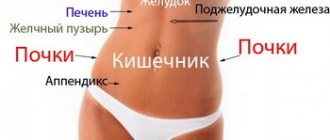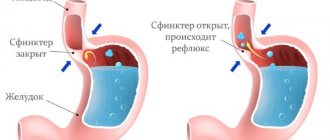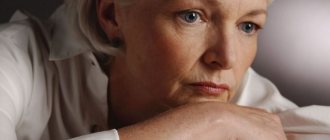Many people associate any pain on the left side of the body with a heart attack. However, in most cases, left armpit pain has a less serious cause.
The axilla (armpit) is the meeting place of muscles and connective tissues, lymph nodes and blood vessels. Many problems of the tissues listed above in this area can lead to pain. Causes may include a muscle strain, a mild allergic reaction, or more serious problems such as infection. While many causes of left armpit pain are not serious, if a person is also experiencing difficulty breathing and pain in the chest, jaw, or neck, they should see a doctor immediately.
What is an “armpit” and what can hurt there?
The armpit or axillary region gets its name from the Old Church Slavonic for “under the muscle” and is anatomically limited by the shoulder joint and the chest. This area contains many sweat and sebaceous glands, as well as hair follicles. The largest collections of lymphatic tissue are also located there - the axillary lymph nodes.
If it hurts under the armpit, most often the cause of the discomfort is blockage of the excretory ducts of the glands, inflammation of the hair follicles, lymph nodes, or pathology of the chest organs.
Folliculitis
Inflammation of the hair follicle can appear due to defects in the skin due to external influences: depilation, shaving, or a bruise or other injury to the axillary area. One or a couple of follicles can hurt, causing very significant redness of the skin, swelling, itching and burning under the armpits in men and women. A cavity filled with pus forms in the follicle, which can open on its own. One type of disease is staphylococcal sycosis, which often occurs in patients suffering from endocrine diseases, metabolic pathologies, or nervous system disorders. A distinctive feature of staphylococcal sycosis is a constant relapsing course and a large affected area.
Causes of pain in the armpit area
The axillary area on the right and left can hurt for a variety of reasons and the nature of the pain, accordingly, can also be different: sharp or dull pain, constant or periodic, strong, pulling, cutting, occurring at rest or when moving the arm, accompanied by itching or redness of the skin .
All these characteristics help to suspect the cause of the pathology and establish a diagnosis.
Sometimes pain in the armpits can occur without pathology:
- mastalgia is a condition typical only for women of reproductive age. Pain in the armpit area occurs due to hormonal changes in the body, they are secondary and appear due to compactions in the mammary glands. Unpleasant sensations make themselves felt a few days before menstruation and disappear during or after the critical days. The intensity of pain can range from mild discomfort to severe pain with any movement. It is quite difficult to cure such pain, since their main cause is hormonal imbalance;
- postoperative pain – pain in the armpit after chest surgery may persist for another 1-4 months, depending on the complexity of the surgical intervention. Most often, such pain occurs in women who have undergone mastectomy or resection of part of the mammary gland. In this case, the nerve endings that innervate the axillary region are damaged and their recovery requires from several weeks to 2-4 months, during which pain occurs.
Diagnostic methods
The initial diagnosis is made by a therapist (in children, a pediatrician).
Collection of verbal information:
- when did the pain appear and what preceded it;
- presence of chronic diseases;
- what additional symptoms are present when pain appears;
- the presence of chronic diseases in close relatives.
Examining the patient visually:
- palpation of the armpit to detect compactions;
- determination of the condition of the skin (swelling, redness, presence of pustules);
- listening to the rhythm of heart contractions and breathing through a stethoscope.
Taking tests to rule out the presence of infection in the body. And also on the concentration of hormones and the presence of immunoglobulin E (antibodies produced during allergies).
Completing additional procedures:
- ECG. To identify heart pathologies;
- Ultrasound and MRI to determine the condition of internal organs and exclude the presence of tumors;
- X-ray. To identify pathologies in joints;
- Mammography. To identify neoplasms in the mammary glands;
- Dopplerography. To examine the state of the lymphatic system.
- Test for the presence of cancer cells.
By specialists, the diagnosis can be expanded for a more complete examination.
Traumatic and inflammatory lesions of the axillary region
The most common causes of pain in the armpit are pathologies directly in this area.
- Injuries to the axillary area - just suddenly raising your arm, bending over or lifting something heavy, and you can stretch the muscles or ligaments of the shoulder joint and chest. A blow to the shoulder or a fall on the arm can cause not only a soft tissue hematoma, but also a severe sprain of muscles or ligaments. The pain in this case is not intense, nagging, constant, intensifying with movement, especially when abducting the arm or trying to lift something heavy.
- Allergies – Allergic reactions can occur to substances contained in antiperspirant or any other cosmetic product used on the skin of the armpits. With allergies, the skin becomes red, swollen, itchy and flaky, lymph nodes may become enlarged and general allergic reactions may occur - nasal congestion, cough or rashes on the face and body.
- Lymphadenitis is another of the most common causes of pain in the armpit. Inflammation of the lymph nodes can be nonspecific: caused by any pathogenic microorganisms or specific: tuberculosis, syphilitic. Usually it hurts under the armpit due to an acute inflammatory nonspecific process in the lymph nodes. The patient's body temperature rises, chills, weakness, headache and other symptoms of malaise occur. Then swelling and tenderness appear in the armpit area, where dense, painful lymph nodes can be easily felt. If lymphadenitis is not treated, the inflammatory process can be localized, a dense capsule of connective tissue will form around it, and inside the lymph node will gradually melt. This course of the disease is characteristic of specific tuberculosis or syphilitic inflammation. When infected with staphylococci, streptococci or other pathogenic microbes, the infection often spreads throughout the body, causing general intoxication of the body and damage to neighboring lymph nodes and organs.
- Hidradenitis or udder knot is an infectious disease, in most cases caused by staphylococcus. Inflammation develops due to damage to the skin, non-compliance with personal hygiene rules and a sharp decrease in immunity. Staphylococci, E. coli, streptococci and other microorganisms found on human skin penetrate the sweat glands and cause their inflammation. In this case, the excretory ducts of the glands become clogged, their contents accumulate inside and an inflammatory process develops under the skin. At the beginning of the disease, itching and burning appear in the armpits, then the skin turns red, swelling appears, and the nodes enlarge, becoming similar to a dog's udder. As the process progresses, the pain intensifies, the ulcers increase in size, become swollen and hot to the touch, and make it difficult to move the arm or even move it. The patient’s general condition also worsens – body temperature rises, weakness, headache, nausea and vomiting appear. If treatment is not started in time, the abscess may open on its own, forming a cavity full of pus, or inflammation may spread to neighboring sweat and sebaceous glands, hair follicles and subcutaneous fat.
- Folliculitis - inflammation of the hair follicle can occur due to damage to the skin during depilation, shaving or injury to the armpit. One or more follicles may become inflamed, causing severe redness of the skin, swelling and soreness under the armpit. A cavity filled with pus forms at the mouth of the follicle, which can open on its own. One of the varieties of the disease is staphylococcal sycosis, which often occurs in patients suffering from endocrine diseases, metabolic disorders or pathologies of the nervous system. A characteristic feature of staphylococcal sycosis is a chronic relapsing course and a large affected area.
- A furuncle is an inflammation of the hair follicle, sebaceous gland and surrounding connective tissue. The cause of the development of a boil under the arm can be traumatic damage to the skin, friction with clothing, failure to comply with personal hygiene rules, decreased immunity and diseases of the endocrine system. When bacteria enter the hair follicle, an inflammatory process develops, spreading to the sebaceous glands and connective tissue. The follicle that has begun to develop is a small, painful lump in the armpit. When the process spreads, the patient shows signs of intoxication - increased body temperature, chills, weakness, headache, and so on, and a carbuncle may appear at the site of the inflammatory infiltrate or it may spread to adjacent hair follicles and the patient will develop furunculosis.
- Carbuncle is an inflammatory process that affects deeper layers - subcutaneous fat. Most often, with a carbuncle, tissue necrosis occurs and a cavity filled with pus is formed. If a carbuncle forms in the armpit, the patient’s condition worsens, the painful formation prevents him from lifting and moving his arm, the patient feels severe pain, weakness and chills.
In addition to the above reasons, pain under the armpit may be associated with diseases of the chest organs:
- Mastopathy - pain under the armpit in women can be caused by pathology of the mammary glands. Pregnancy, breastfeeding, and surgery cause changes in the mammary glands and cause nagging and aching pain in the armpit, which disappears over time.
- Diseases of the cardiovascular system - stabbing or pulling pain in the armpit sometimes occurs with coronary heart disease, myocardial infarction. Pathologies of the cardiovascular system are accompanied by shortness of breath, chest pain, increased heart rate or difficulty breathing.
- Diseases of the nervous system - neuralgia, neurosis or vegetative-vascular dystonia - can also cause pain in the armpits.
- Osteochondrosis – cervical or thoracic osteochondrosis can cause severe pain in the armpit area. With osteochondrosis, due to degenerative processes in the intervertebral discs, the spinal columns are displaced, disrupting the innervation of the axillary region and causing severe pain when turning the head, bending or moving the arm.
- Neoplasms - in rare cases, regularly occurring or constantly present pain in the axillary area is associated with benign and malignant tumors of soft tissues. It is very difficult to diagnose such neoplasms on your own, so if you experience dull, nagging or aching pain, lumps in the armpit area and a general deterioration in your condition, you should urgently seek medical help.
Lymphadenitis
Another one of the most well-known burning factors. Inflammation of the lymph nodes can be nonspecific: it is caused by all kinds of pathogenic microorganisms or a specific disease - tuberculosis, syphilis. As a rule, it burns due to acute inflammation in the lymph node area. The sick person's body temperature increases, trembling, weakness, headache and other signs of malaise intensify. Then there is swelling and severe discomfort in the armpit area, where you can simply feel the dense, unhealthy lymph nodes.
If you do not get rid of the disease, the inflammatory process can be localized, a compacted membrane of connective tissue will form around it, and the lymph node will begin to melt from the inside over time. A similar course of the disease is characteristic of specific tuberculosis or syphilitic inflammation. When infected with staphylococci, streptococci or other pathogenic bacteria, the infection often spreads throughout the body, initiating general intoxication of the body and damage to nearby lymph nodes and organs.
Pain under left armpit
If the pain under the armpit on the left is not associated with inflammatory diseases of the skin and subcutaneous fat or lymphadenitis, it is necessary to exclude diseases of the cardiovascular system. Pain under the left armpit can occur due to coronary heart disease, angina pectoris or myocardial infarction. Most often, such pains are reflected and, in addition to them, the patient is bothered by other symptoms that make it possible to diagnose the pathology of the cardiovascular system. But sometimes weakness and aching pain in the armpit on the left become the first symptoms of myocardial infarction, a deadly disease.
Diagnostics
During an external examination, palpation determines only the degree of enlargement of the lymph nodes; in order to establish the cause of the pathology, tests are performed.
Diagnostic methods:
- clinical, hormonal blood test;
- test for tumor markers, biopsy, cytology of nipple discharge;
- analysis for syphilis, HIV, hepatitis;
- Mantoux test;
- Ultrasound, MRI, x-ray of the shoulder joint - prescribed if pain in the armpit appears after injuries or training;
- mammography, ultrasound of the mammary glands;
- Dopplerography, X-ray with contrast, CT, MRI of lymph nodes;
- ECG.
Blood tests for various diseases will help determine the cause of pain
In case of severe inflammatory processes, PCR and ELISA are prescribed to identify the type of pathogen, and antibiotic sensitivity testing.
What to do if your armpit hurts
If there is pain under the armpit, before starting treatment, you need to determine the cause of the pathology. A timely visit to a doctor will not only help to avoid complications, but also simplify the treatment process.
Before you see a doctor, you need to:
- carefully examine the axillary area - inflammatory changes, redness or swelling are easy to notice even with the most superficial examination;
- palpate the affected area - with lymphadenitis in the armpit, you can feel dense, painful, enlarged lymph nodes on one or, more often, both sides. But if you feel a dense, painless and non-displacing formation under the armpit, it is necessary to conduct an examination as soon as possible and exclude neoplasms, tuberculosis or syphilis;
- carefully observe the hygiene of the armpit area - if irritation, redness or an abscess appears on the skin of the armpit, you need to treat the armpits at least 3-4 times a day with warm water and soap, a weak solution of potassium permanganate, hydrogen peroxide or other antiseptic agents;
- exclude irritating and traumatic factors - no matter what causes the pain under the armpit, you need to try to injure this area as little as possible: do not use antiperspirant rollers, do not epilate and do not shave the armpit. You should also avoid clothing that is tight to this area, rough fabrics that irritate the skin, and try to move your hand less.
Hidradenitis
Hidradenitis is an inflammatory formation in the ducts of the apocrine glands. Acute, suppurating inflammation and abscess form not only under the armpit, but also on the scrotum, anus, female labia and under the breasts.
© shutterstock
Young children and older people are not susceptible to this disease. Unfortunately, women aged 16 to 60 years are more vulnerable, since the disease begins to produce secretions from puberty and ends at menopause.
What not to do if your armpit hurts
If you have pain in the armpit area on the right or left and you do not know exactly the cause of the ailment, under no circumstances should you:
- heat the sore spot - with purulent inflammation, this can speed up the process and cause the infection to spread throughout the body and even cause septic shock; it is also very dangerous to heat tumors;
- use any ointments, compresses or rubbing - this can not only greatly worsen the condition, but also cause secondary infection;
- massage or rub the affected area;
- take antibiotics or painkillers - taking antibacterial drugs can greatly change the clinical picture of the disease and make it difficult to make a correct diagnosis, and due to painkillers or sleeping pills, there is a risk of “oversleeping” a myocardial infarction, an attack of angina, or a “breakthrough” of a boil.
Treatment
Unexplained discomfort in the form of a burning sensation can occur as a result of poor nutrition or too tight clothing. This symptom may appear after a muscle is stretched as a result of inflammation of the sweat glands or lymph nodes.
Treatment of burning under the armpit must be carried out strictly under medical supervision; for this it is important to consult a doctor. There may be a burning sensation in the area under the muscle; the cause of this discomfort is a chest injury.
When a burning sensation occurs, skin irritation is often visible. It is necessary to bathe these areas with laundry soap or manganese solution, treat with chlorhexidine after wiping the skin dry. Try to remove pressure clothing from this arm, wash the wound more often, avoid perfumes, cosmetics and hair removal. After you have tried the above methods and nothing has helped, you need to go to the doctor.
You can start with a therapist, if he doesn’t determine anything, then go to a surgeon. After making a diagnosis, a specialist may prescribe ointments or antiseptics. In severe cases, surgery is suggested. It is necessary to carry out a complete diagnosis of the body, donating feces, urine, and blood for testing. An x-ray will help you find out the cause of pain and burning in the area under your arm. If the x-ray does not reveal anything, there is an ultrasound and a computed tomograph.
Adviсe:
- Do not self-medicate under any circumstances, it is dangerous.
- If a new growth or compaction appears - hard or soft - under the skin, under no circumstances should such areas be heated. The pus will spread throughout the body, or the formation will increase in size.
- No ointments need to be used, as well as tight bandages and warming or cooling compresses.
- Under no circumstances should you start taking a course of antibiotics, as this will lead to a change in symptoms and the doctor will then be unable to make a correct diagnosis in a timely manner.
After you have visited the doctor, he will prescribe bandages and special ointments; you need to go to the hospital for bandaging. Antibiotics will be prescribed for oral administration. A UHF course will also be prescribed. The patient should go on a vitamin diet, which will consist of vegetables and fruits. Dishes such as pepper, fatty meats, alcohol and cigarettes should be removed from the diet.
If the treatment does not give the desired result, removal of the formation will be prescribed or all pus will be removed from it through an incision. When cleaning the pus does not give the desired results, the formation is removed along with the surrounding skin in order to destroy the infection.











